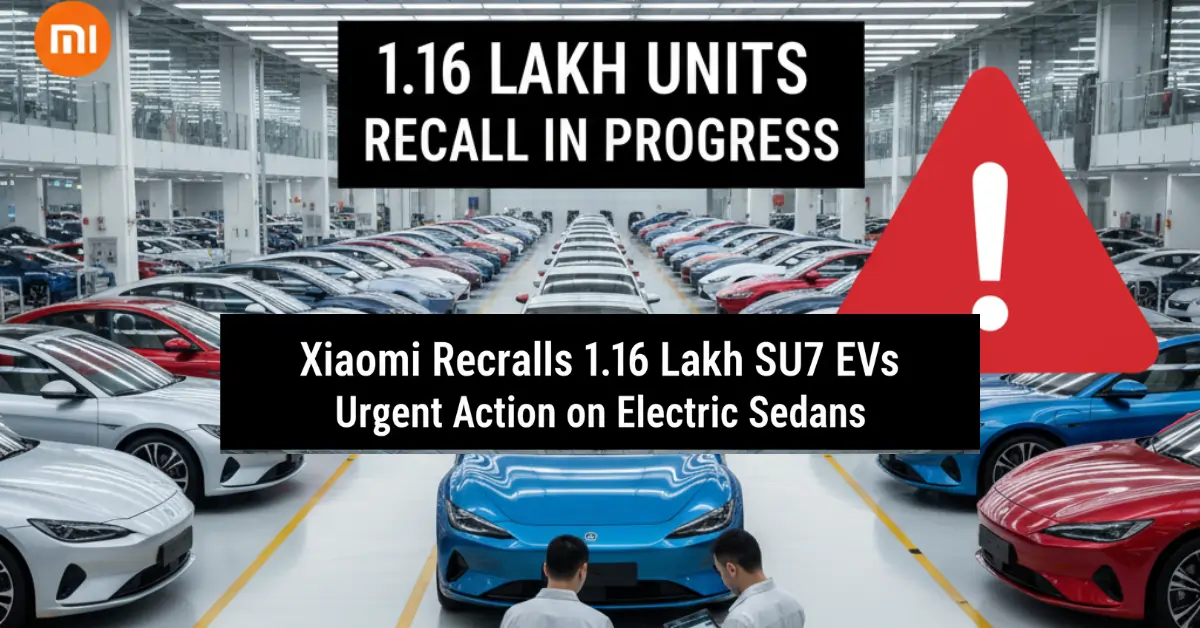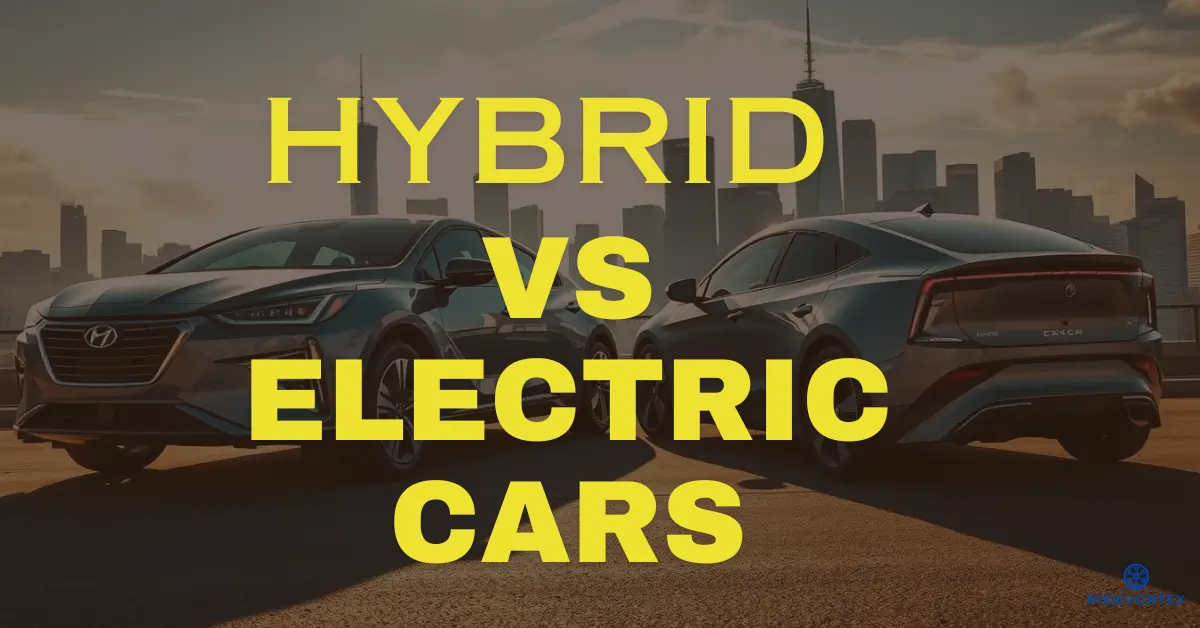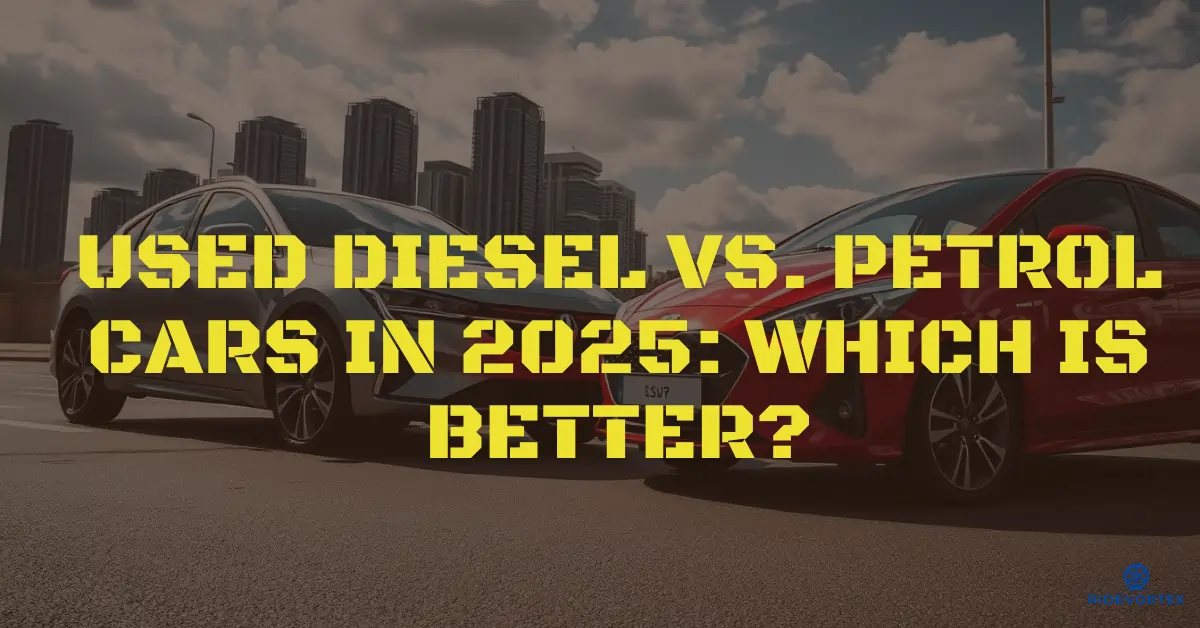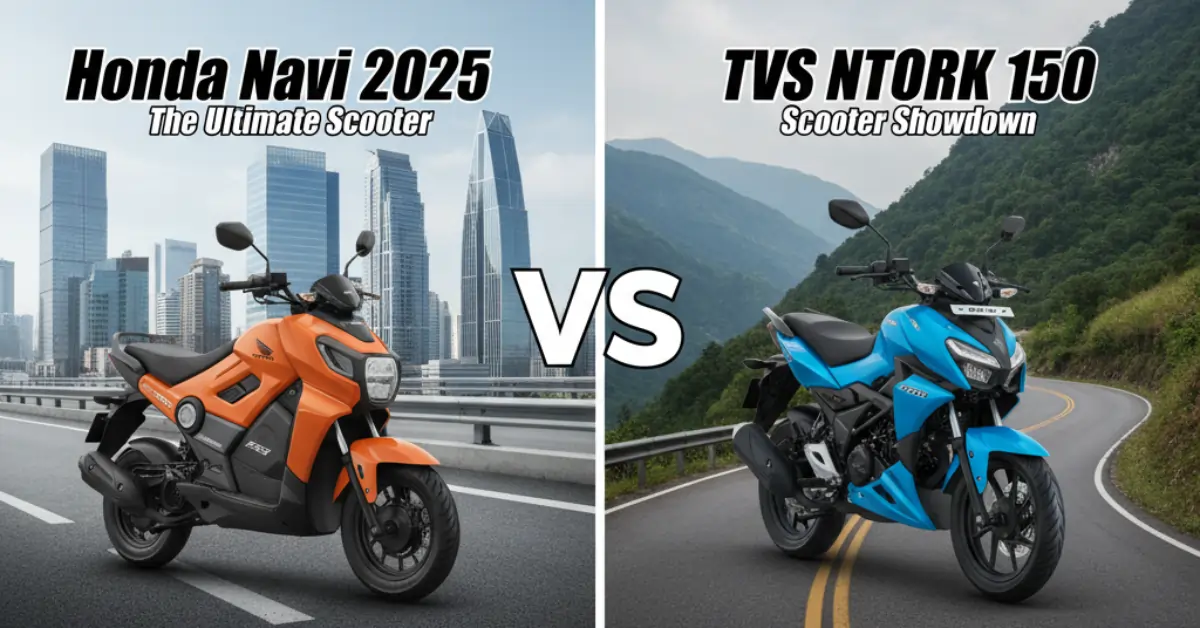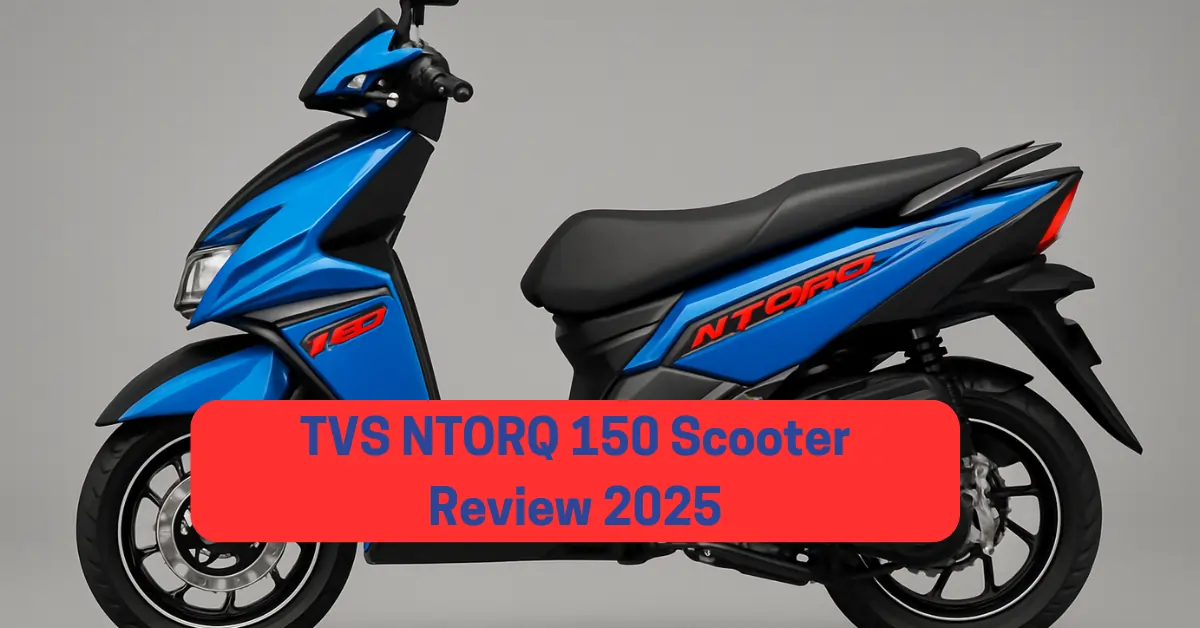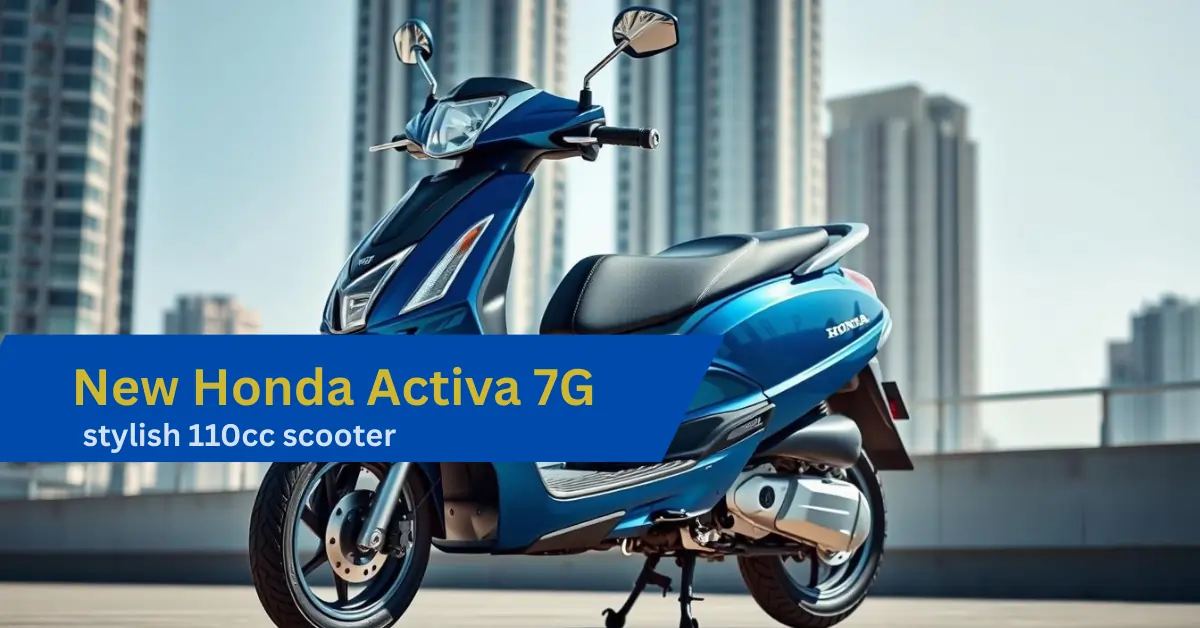The Nissan Leaf is back and it’s undergone a remarkable transformation. From its pioneering hatchback roots to its latest SUV-inspired incarnation, this new Leaf aims to reclaim its position as one of the world’s top-selling electric vehicles. With fierce competition evolving rapidly in the EV market, what exactly does the new Nissan Leaf offer? And can it stand out among popular rivals like the Kia EV3 and Škoda LRO? In this detailed review, we’ll break down everything you need to know about Nissan’s latest electric offering.
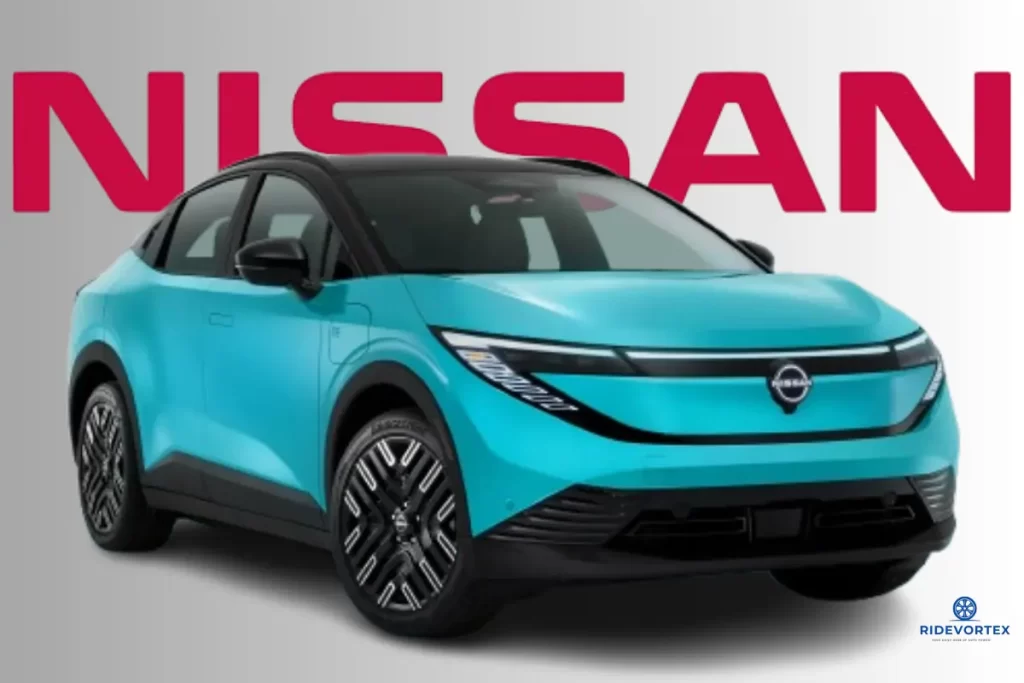
Introduction: A Legacy of Electric Innovation
When Nissan launched the original Leaf back in 2010, it was a true trailblazer in the electric car world. As a compact hatchback roughly the size of a golf ball, it quickly became the best-selling electric car globally, thanks to a combination of affordability, practicality, and pioneering technology. However, that success came at a time when electric cars were still rare and competition was limited.
Since then, Nissan updated the Leaf with a second generation in 2018, improving its battery and motor options along with some design tweaks. But as the electric vehicle market exploded with new entrants, the Leaf began to fall behind more modern rivals. Today, 15 years after its debut, Nissan has reinvented the Leaf to better meet current demands.
The New Nissan Leaf: Key Highlights
The latest Leaf has shifted from its original hatchback design to a more popular SUV-style body, aligning it with current market trends. Built on Nissan’s CMF-EV platform—a flexible electric vehicle architecture shared with the larger Nissan Ariya and some Renault EVs—this new Leaf is designed to compete head-to-head with other compact electric SUVs such as the Kia EV3 and Škoda LRO.
| Feature | Old Nissan Leaf (2010/2018) | New Nissan Leaf (2024) |
|---|---|---|
| Body Style | Golf-sized Hatchback | Compact SUV with sloping roofline |
| Platform | Older EV platform | CMF-EV shared with Ariya and Renault EVs |
| Battery Options | 24 kWh (range ~124 miles) | 52 kWh / 72 kWh (range 271 / 375 miles) |
| Charging Connector | CHAdeMO rapid charging only | CCS rapid charging (up to 150 kW) |
| Infotainment | Basic touchscreen | Dual 14.3-inch Google-based touchscreens (top trims) |
| Boot Space | ~400 L | 437 L with versatile false floor |
Exterior Design and Practicality
The new Leaf sports a modern, sleek exterior with flush door handles and options for 18 or 19-inch alloy wheels depending on the trim. Its steeply raked windscreen and sloping roofline give it a sporty silhouette reminiscent of classic cars like the Ford Capri. This SUV styling aligns with current customer preferences, making the Leaf more appealing to a wider audience.
Boot space is competitive for the segment at 437 litres, slightly less than rivals like the Kia EV3 (460 L) and Škoda LRO (470 L), but still practical. A clever false floor setup borrowed from the Nissan Qashqai adds versatility, featuring a dual-sided floor panel (carpet on one side, easy-clean surface on the other) and a vertical divider to prevent cargo shifting. The top two trim levels also include a powered tailgate for added convenience.
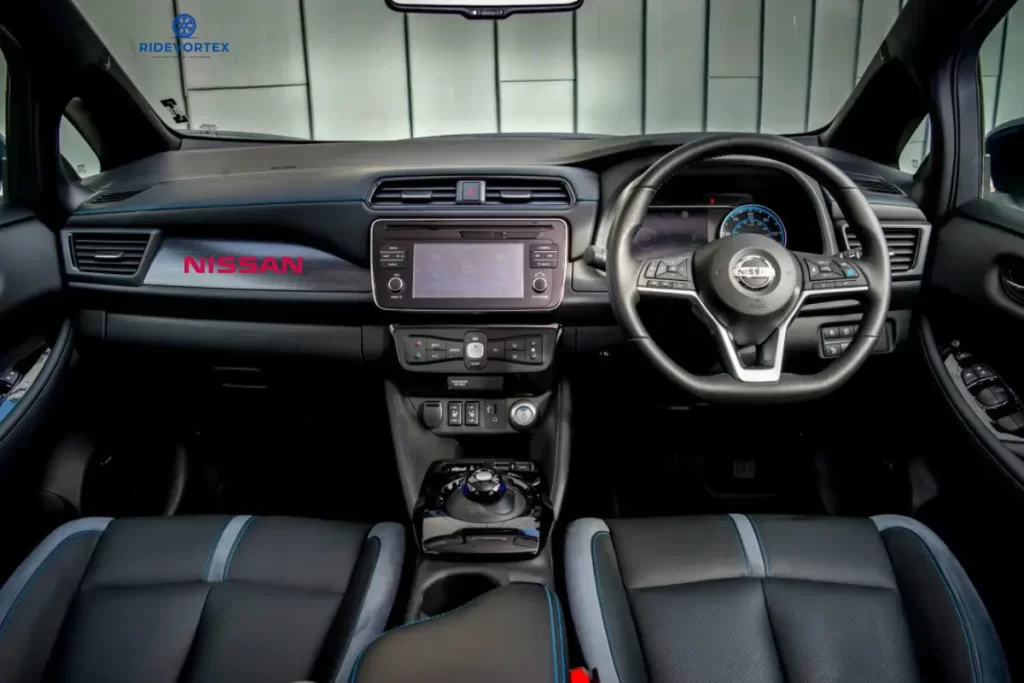
🛋️ Interior and Technology
The 2024 Nissan Leaf’s cabin is a major step up from its older models, ditching the clunky layout for a sleek, tech-forward design. Drawing inspiration from the Nissan Ariya, the new Leaf features a dual-screen setup that blends innovation with user-friendliness.
The system is highly intuitive and includes touch-sensitive climate icons that remain visible — making adjustments easy even while driving. This balance of modern interface and practicality is a big win for daily drivers.
There are four trim levels expected, with the top three featuring the full dual-screen Google suite. The entry-level model comes with a simpler infotainment setup, suitable for budget-conscious buyers.
Rear seating offers ample knee and legroom, though the stylish sloping roofline slightly affects headroom for taller passengers. Like many compact EVs, the rear seats do not slide or recline — a standard trade-off in this class.
Powertrain and Battery Options
🔋 Power Packed: What’s New Under the Hood of the 2024 Nissan Leaf?
One of the biggest upgrades in the new Nissan Leaf is all about what powers it — the battery and charging capabilities are now smarter, faster, and stronger than ever.
⚡ Dual Battery Options
🚀 Official WLTP Ranges
52 kWh: Up to 271 miles
72 kWh: Up to 375 miles
🏁 Performance Numbers
52 kWh Model: 0–62 mph in 8.6 seconds
72 kWh Model: 0–62 mph in 7.6 seconds
⚡ Charging Speeds
The outdated CHAdeMO plug is gone. Now featuring:
CCS Rapid Charging: 105 kW (52 kWh) & 150 kW (72 kWh)
🔌 Onboard Charger
Comes standard with 11 kW onboard charger for 72 kWh. Optional on the smaller battery model.
🔋 V2L – Power to Everything
With Vehicle-to-Load support, power your laptop, lights, or even a kettle directly from the Leaf.
Driving Experience
We had the opportunity to briefly drive a top-spec prototype of the new Leaf. The experience was positive, with smooth and confident acceleration, comfortable ride quality, and predictable handling. While this was a limited drive, the Leaf shows promise as a practical, easy-to-live-with electric SUV.
However, the competition is fierce. Both the Kia EV3 and Škoda LRO offer fantastic driving dynamics, practical interiors, and strong value, raising the bar for the Leaf to stand out in this segment.
Pricing and Market Position
Official pricing has not yet been announced, but Nissan has hinted that the Leaf will be competitively priced against rivals like the Kia EV3 and Volkswagen ID.3. If Nissan can maintain affordability while delivering the new Leaf’s enhanced technology and range, it will be well-positioned to regain its top-selling EV status.
The new Leaf will be built and sold globally, including production at Nissan’s Sunderland factory in the UK, which has been upgraded to support Leaf manufacturing alongside upcoming electric models like the Nissan Duke and Qashqai SUVs.
Summary: Why the New Nissan Leaf Matters
The Nissan Leaf has always been a key player in the electric vehicle market, and its latest iteration shows Nissan’s commitment to evolving with the times. The switch to an SUV body style, significantly improved battery options with longer ranges, modern infotainment, and practical features like V2L charging make the Leaf a serious contender once again.
While the competition is strong, the new Leaf’s blend of technology, comfort, and practicality offers a compelling package for buyers looking for a reliable electric SUV. Its success will ultimately depend on pricing, real-world performance, and how well Nissan promotes its unique features in an increasingly crowded EV marketplace.
Frequently Asked Questions (FAQs)
1. What is the official range of the new Nissan Leaf?
The new Leaf offers two battery options with official WLTP ranges of 271 miles (52 kWh battery) and 375 miles (72 kWh battery).
2. Does the new Leaf support fast charging?
Yes, it uses the CCS rapid charging standard with a maximum charging rate of 150 kW for the larger battery and 105 kW for the smaller one, allowing for a 20-80% charge in about 30 minutes.
3. What new technology features does the Leaf have?
The Leaf features dual 14.3-inch Google-based infotainment screens (on higher trims), touch-sensitive climate controls, and vehicle-to-load (V2L) functionality to power external devices.
4. How practical is the new Leaf’s interior?
It offers good knee and legroom in the rear, a competitive 437-litre boot with a versatile false floor, but rear headroom is limited by the sloping roofline.
5. When will the new Nissan Leaf be available?
The Leaf is expected to hit roads later this year, with global production including Nissan’s Sunderland plant in the UK.
🚗 How to Choose the Right Nissan Leaf Model for You
- Assess Your Range Needs: If you travel long distances or commute daily, the 72 kWh battery will provide better range and peace of mind.
- Consider Charging Facilities: Have access to fast chargers? The larger battery charges faster and is more efficient for quick top-ups.
- Trim Level and Features: For a premium tech experience, go for the top trims with dual Google-based touchscreens and smart features.
- Budget: Lower trims have fewer features and the 52 kWh battery, but they’re lighter on the wallet. Balance tech with your budget wisely.
- Space Requirements: Carry taller passengers often? Keep in mind the sloping roofline reduces rear headroom slightly in newer models.
Final Thoughts
The new Nissan Leaf is a bold step forward for Nissan’s electric lineup. By embracing the SUV trend, upgrading its battery and tech, and addressing past shortcomings like charging compatibility, the Leaf looks ready to compete fiercely in today’s EV market.
Whether it can reclaim its crown as the best-selling electric car in the world will depend on how it performs in real-world conditions, its pricing strategy, and how well it resonates with drivers looking for a practical, stylish, and advanced electric vehicle.
For more detailed reviews, comparisons, and the latest news on the Nissan Leaf and other electric cars, keep an eye on trusted automotive sources and expert reviews.



